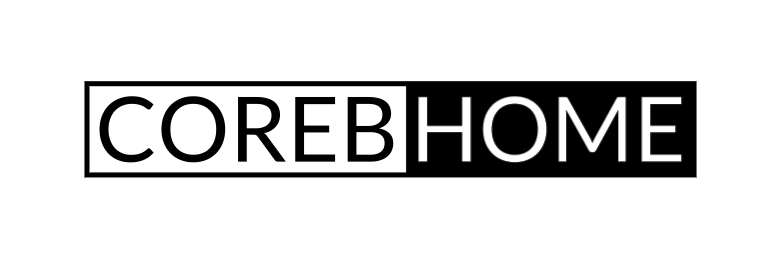In the dynamic landscape of home technology, a transformative wave is sweeping through residential spaces, heralding a new era of sustainability and energy efficiency. The fusion of innovative technologies with advanced design principles has given rise to a generation of energy-saving devices that not only redefine the efficiency of our homes but also contribute significantly to a greener, more eco-conscious lifestyle. From intelligent HVAC systems to smart power management, these professional-grade solutions are reshaping the way we think about and utilize energy within our living spaces.
At the forefront of this energy revolution is the evolution of smart heating, ventilation, and air conditioning (HVAC) systems. Beyond the conventional temperature control mechanisms, modern smart HVAC systems leverage advanced sensors, predictive algorithms, and adaptive learning to create a personalized and energy-efficient indoor climate. These systems intelligently adjust temperature settings based on user behavior, occupancy patterns, and external weather conditions. The result is a seamless integration of comfort and sustainability, where homeowners experience optimal climate conditions while minimizing energy consumption.
Smart thermostats, a pivotal component of intelligent HVAC systems, embody the forefront of energy-saving technology. These devices, equipped with sensors and learning algorithms, enable homeowners to fine-tune and automate their heating and cooling preferences. The ability to remotely control these thermostats through mobile applications adds a layer of convenience, allowing users to optimize their home’s temperature settings even when away. The synergy between smart thermostats and HVAC systems not only enhances comfort but also empowers homeowners to make informed decisions that contribute to overall energy efficiency.
Advanced lighting solutions, powered by energy-efficient LED technology, are reshaping the way we illuminate our homes. Beyond their longevity and reduced environmental impact, smart lighting systems offer an unprecedented level of control and customization. Homeowners can adjust color temperatures, brightness levels, and even create dynamic lighting scenes to suit different activities and moods. Integration with motion sensors and ambient light detectors ensures that lights are active only when needed, minimizing unnecessary energy consumption and contributing to a more sustainable home environment.
In the realm of smart appliances, the quest for energy efficiency has led to the integration of intelligent features within everyday devices. Energy-efficient refrigerators, washing machines, and dishwashers now boast advanced sensors and automation capabilities. For instance, smart refrigerators can optimize cooling cycles based on usage patterns, while intelligent washing machines analyze load sizes and fabric types to adjust water and detergent usage for maximum efficiency. These devices not only reduce energy consumption but also contribute to a more sustainable lifestyle.
The integration of renewable energy sources within smart homes has become increasingly prevalent, with solar power leading the charge. Solar panels, coupled with energy storage systems, allow homeowners to generate and store their own clean energy. Smart inverters and monitoring systems provide real-time insights into energy production and consumption, enabling users to harness solar power efficiently. The surplus energy generated can be stored for later use or fed back into the grid, fostering a more sustainable and decentralized approach to energy consumption.
Automated shading and window control systems play a pivotal role in optimizing natural light and temperature within smart homes. These systems, equipped with sensors that detect sunlight intensity and external temperatures, dynamically adjust blinds or shades throughout the day. By harnessing natural light and regulating heat gain, these systems contribute to a more energy-efficient and comfortable living environment, reducing the reliance on artificial lighting and air conditioning.
Smart meters, equipped with real-time monitoring capabilities, have become essential tools in the pursuit of energy efficiency. These devices provide homeowners with detailed insights into their electricity usage, allowing them to identify energy-intensive appliances and adjust their usage patterns accordingly. The integration of smart meters with home energy management systems enables users to track and optimize their energy consumption, fostering a culture of awareness and efficiency.
Home energy management systems serve as the orchestrators of various energy-saving devices within smart homes. These centralized platforms integrate with different appliances, sensors, and meters, providing a unified interface for homeowners to monitor and control their energy usage. Advanced analytics and reporting features offer actionable insights, enabling users to make informed decisions that optimize energy efficiency and reduce overall consumption.
The integration of artificial intelligence (AI) has further elevated the capabilities of energy-saving devices within smart homes. Machine learning algorithms analyze historical energy usage data, allowing the system to predict and adapt to user preferences. For instance, an AI-powered climate control system can learn from occupants’ behavior to anticipate temperature preferences at different times of the day, optimizing energy consumption accordingly. This intelligent adaptation not only enhances efficiency but also ensures a seamless and personalized experience for homeowners.
As the world embraces a more sustainable future, energy-efficient building materials and design principles are becoming integral to smart home development. From well-insulated walls to energy-efficient windows, these features minimize heat loss or gain, reducing the workload on HVAC systems and enhancing overall energy efficiency. Smart home designs incorporate natural ventilation strategies, further decreasing the reliance on mechanical cooling and heating systems and promoting a holistic approach to energy conservation.
In conclusion, the integration of cutting-edge energy-saving devices within smart homes represents a paradigm shift towards a more sustainable and eco-conscious lifestyle. The convergence of innovative technologies, intelligent design, and a commitment to energy efficiency is reshaping the way we interact with and consume energy in our living spaces. As we navigate the challenges of an evolving world, these energy-saving technologies stand as beacons of progress, illuminating a path towards a future where homes are not only technologically advanced but also environmentally responsible.









No Comment